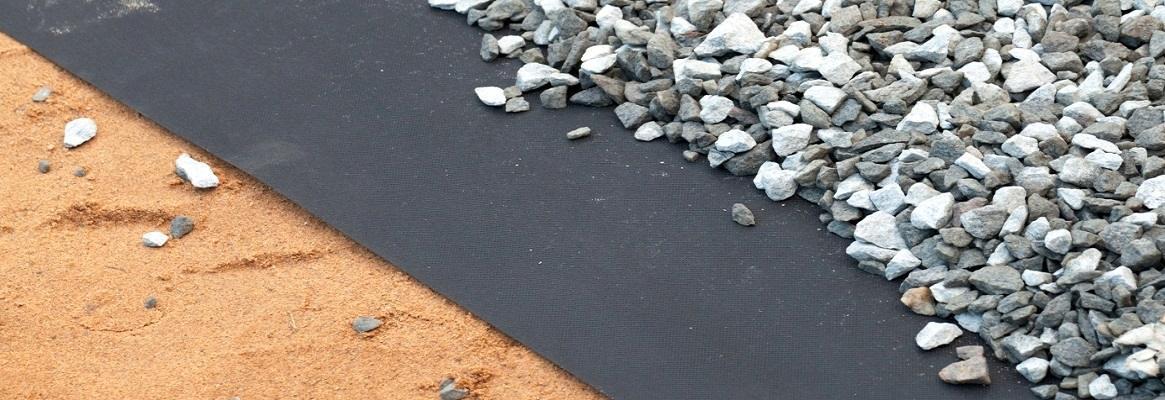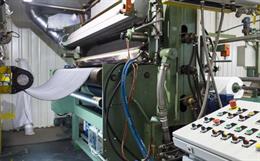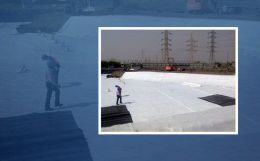Manufactureof geotextiles started in India in 1985-86. Munish Tyagi takes aninformed look at the road travelled since then.
The landscape for geotextileslooks optimistic. It is marked by major players like Garware Wall Ropes,Technofab India, Kusumgar Projects and others including Strata GeoSystems andSkaps Industries. Some of these players have started providing designassistance to users in the infrastructure sector.
There is also a strong presence ofinternational names and MNCs like Fibertex Nonwovens, Maccaferi EnvironmentalSystems, Tencate, Terram and Hueskar. Under technical support from NationalJute Board and Coir Board, there has been renewed focus on use of naturalfibres like jute and coir, especially for use as geotextile, as underlay forrural roads.
India is a large producer ofnatural fibres like jute and coir and their use in geotextiles, especially forrural road applications, has led to savings in overall costs and good technicalresults. Greater focus needs to be directed to these natural resources in Indiafor production of environmentally friendly geotextiles that are locally sourcedand locally consumed.
Geo-synthetics are virtuallyholding up contemporary civilisations. They are being used increasingly for allconceivable situations in civil engineering and infrastructure projects. Thesecover construction of roads and expressways, airport runways, railwayembankments, sea side platforms, retaining walls, drainage and seepage controlworks and water management including river training projects.
Despite the inherent qualities,use of geo-synthetic materials in India is yet to pick up due to low awarenessof its potential and end uses. India has the second-largest road network in theworld covering approximately 23 million kilometres, so the growth forgeo-synthetics and geotextiles can surely have far-reaching andmulti-disciplinary applications.
Geotextiles are cost-effective.So, overall demand is expected to grow. Moreover, their engineered andtechnical parameters retain enhanced performance amidst all terrain and weatherconditions. The civil engineering vertical is already using about 100 millionsquare metres of geo-synthetics and geotextiles, and it is projected to growsteadily at 10-12 per cent per annum.
The potential
The growth over the past threedecades may not have been phenomenal but it has been steady.
With an average GDP rate of 6.5 to 7 per cent, India is the fastest developing economy. Liberalisation has brought large infrastructure projects for new highways and roads, railway tracks, airports and seaports, power plants and water management systems like dams and canals.
Planned spending on infrastructure alone in the ongoing 12th National Plan is estimated at US$ 1 trillion, which will surely promote the use and consumption of geo-technical products. Growth in demand and applications for geo-synthetic material and geotextiles can only be exponential once the government makes it mandatory to use these advanced materials in sectors like road construction, airports and seaport projects, dams and canals. Two major segments that may turn into even bigger consumers are the Indian Railways and defence establishments.
This will boost domestic production and reduce current imports, besides reiterating the government's Make in India initiative.
Technology for production of geo-synthetic textiles, including geo-technical sheets, geo-membranes, geo-cells and geo-tubes, is evolving fast. They are being welcomed especially in civil engineering including construction of rapidly expanding infrastructure projects in India. This was clearly endorsed in the 2nd Global Summit on geo-synthetics held on 19-20 May at New Delhi. It was attended by leading international and domestic manufacturers and key research institutions like the Indian Institutes of Technology, Central Coir Research Institute, National Jute Board, Indian Railways and the Ministry of Textiles and Ministry of Road Transport, apart from a battery of domain experts.
The future
The road map for increased applications leading to growth in domestic demand and production lies in addressing needs of key sectors already experiencing the benefits of the end uses of geo-synthetics and geotextiles in terms of quality and effective cost.
The Indian Railways, with a network of 61,000 km, is amongst the largest in the world. About 99 per cent of this network is in broad gauge. New tracks for dedicated freight corridors and high speed trains are already on ground for implementation by or before 2021. This opens huge opportunity for expanded demand and consumption of geo-synthetic and geotextiles especially for use as soil underlay and for rail embankments.
Other equally important and bulk-consuming segments are for roads and highways. The textiles are being used increasingly for reinforced walls, road under-bridges and road over-bridges. In addition to the perceived increased use of geo-technical materials in military projects, other fields where they can be used include inland water transport systems, inter-basin water transfer systems, landfills for solid waste management, canal and coastline protection and landslide mitigation in hilly areas with unstable terrain.
The sector requires development of and adherence to quality standards and performance codes under the umbrella of the BIS or some similar designated body or council.







